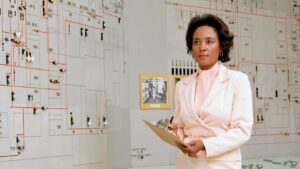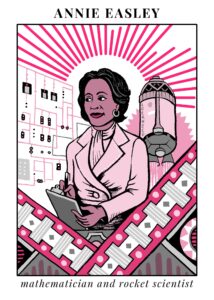Early Life
Annie was born on April 23rd 1933, in Birmingham, Alabama. Growing up, her mother told her she could be anything she wanted but she would have to work for it. In 1950, she registered at Xavier University, which was then an African-American Roman Catholic University. She went on to major in pharmacy for four years.
In 1954, she returned back to her hometown, Birmingham. At the time, the Jim Crow laws, which supported racial inequality, African Americans were obliged to pass a literacy test. Easley says she remembers the test giver telling her, ‘You went to Xavier University, two dollars. ’ She then helped other African Americans to prepare for the test.
Discover more black women in STEM >>

Career
In 1955, she started her career at NASA or back then NACA, National Advisory Committee for Aeronautics. She started out as a human-computer performing complex mathematical calculations. She quickly became very skilled at computer programming, using languages such as Formula Translating System to work on many of NASA’s projects. Easley developed and included code used in researching energy conversion systems, studying technology used for early vehicles.
Annie worked on the Centaur, a rocket successfully launched in 1963. This project is the foundation of the technology used in space shuttles and weather satellites today. But her contributions to space technology did not end there, she contributed to the 1997 launch of Cassini, a collaboration between NASA, the European Space Agency, and the Italian Space Agency to send a probe to study the planet Saturn and its system, rings, and natural satellites

Legacy
Later on, at NASA, she took on the supervisor role of equal employment opportunity (EEO) counsellor. She helped others address issues of gender, race, and age in discrimination which were taking place in hopes to create a more equal environment.
Easley retired in 1989 after 34 years with NASA. She passed away on June 25, 2011. If you want to know more about her work, check out NASA’s website here. Click here to find out more about her work.
Article Writer – Manjit Somal.






